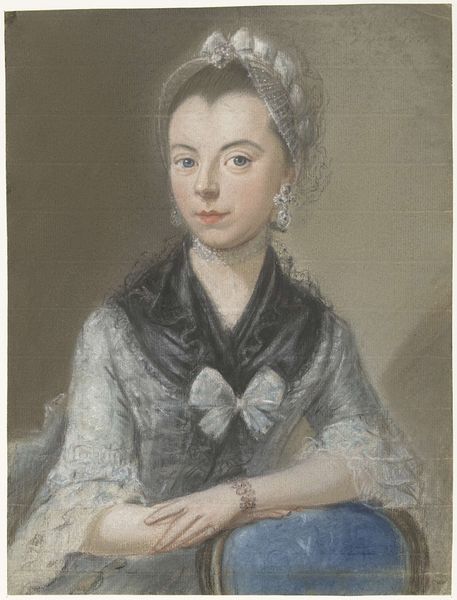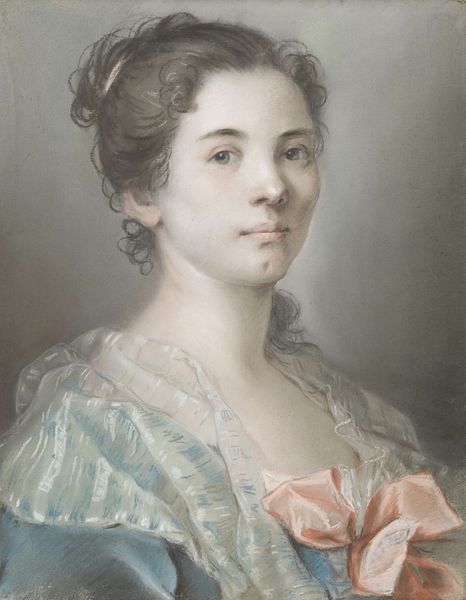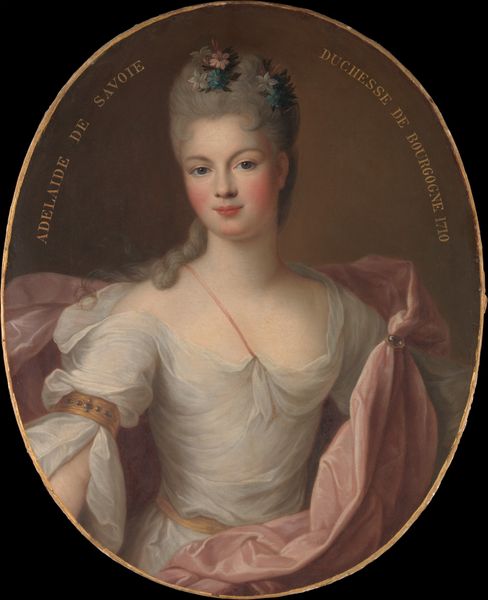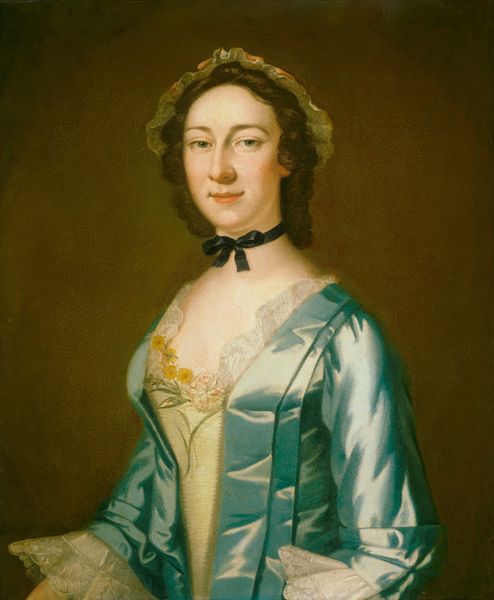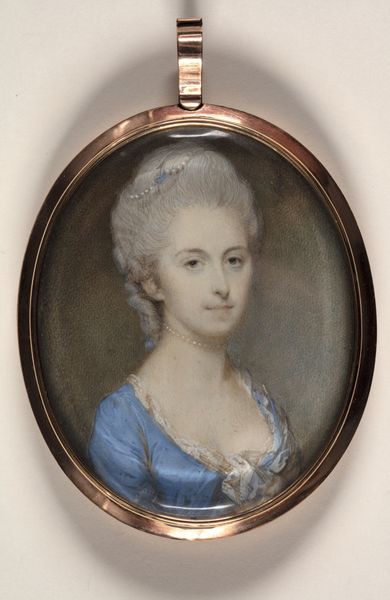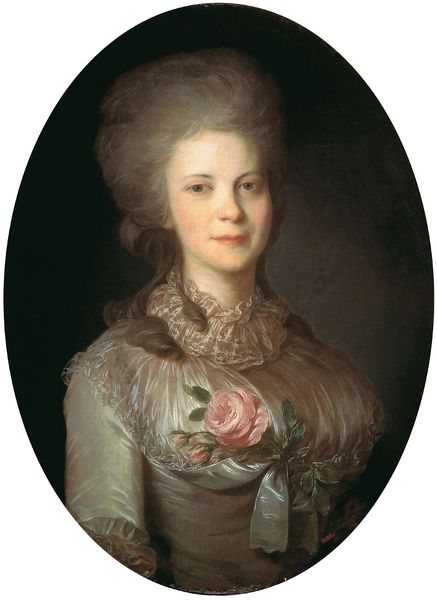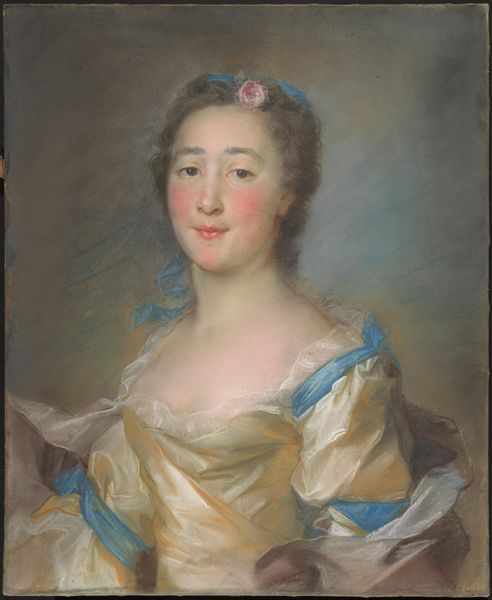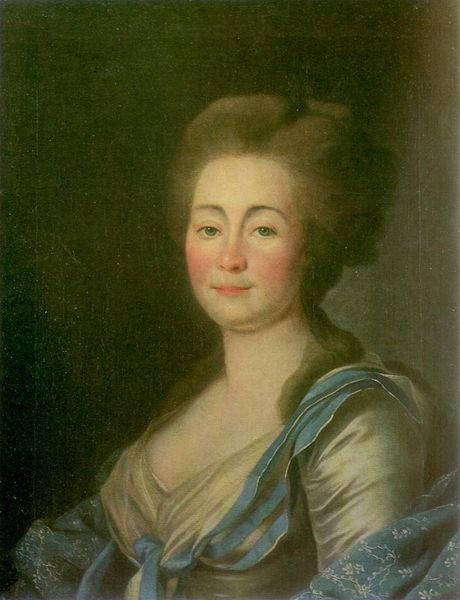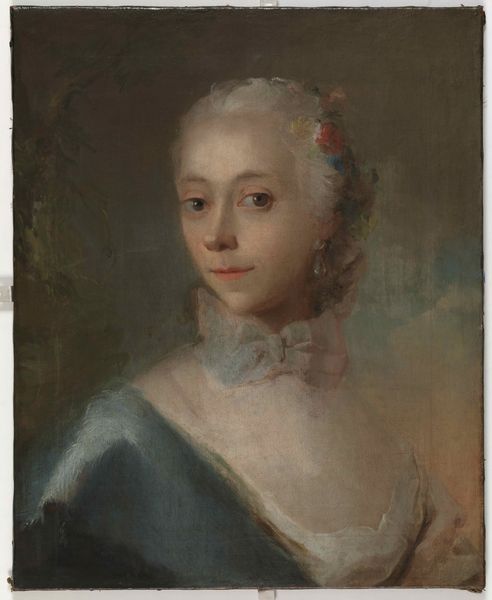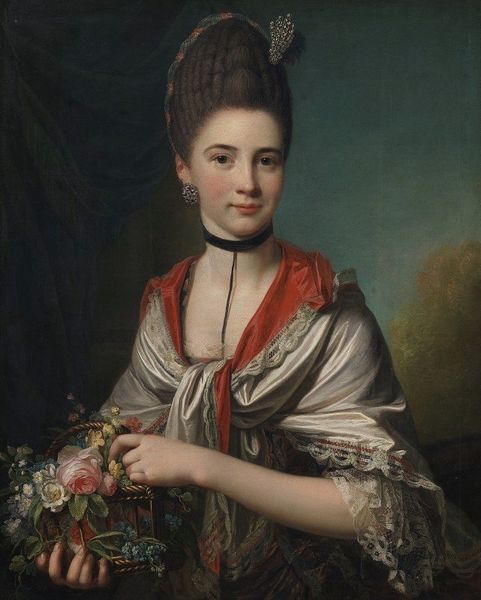
pastel
#
portrait
#
pastel
#
academic-art
#
rococo
Dimensions: 571 mm (height) x 462 mm (width) (bladmaal)
Curator: Looking at Jean-Baptiste Perronneau's "Portrait of a Lady", a work created sometime between 1730 and 1783, presently held at the SMK, the first thing I see is this incredible, almost dreamy softness. It's like looking at a cloud that somehow took the shape of a person. Editor: Yes, Perronneau really excelled with pastels, a medium that allows for such delicate rendering. It’s interesting to consider why pastels, often associated with femininity and lightness, became so popular for portraits of aristocratic women in the Rococo period. It’s a deliberate choice. Curator: The way the light catches her skin – it’s like she’s illuminated from within. I also notice the touch of almost rebellious black choker against her pale skin; is this subversion? Editor: The black choker, though a small detail, could signal evolving fashion trends, and perhaps even a hint of something more than the Rococo ideals. There’s always politics embedded within images of powerful women in the eighteenth century, influencing not only self-representation but public perceptions too. Curator: I love how that blue almost sings. But is it my imagination, or is there a trace of melancholia about her? She feels, almost touchingly, real in ways these portraits often aren’t. Editor: Realism was emerging as an important feature and value in art, although academic conventions tended to produce highly standardized likenesses and very recognizable tropes that conveyed the sitter's social status, like clothing and props. Curator: But how powerful a portrait of this "lady" it turns out to be? Its charm is just like finding something fragile that somehow speaks volumes! Editor: Ultimately, this portrait underscores art's intricate relationship with class, gender, and social norms. An echo of history.
Comments
No comments
Be the first to comment and join the conversation on the ultimate creative platform.
